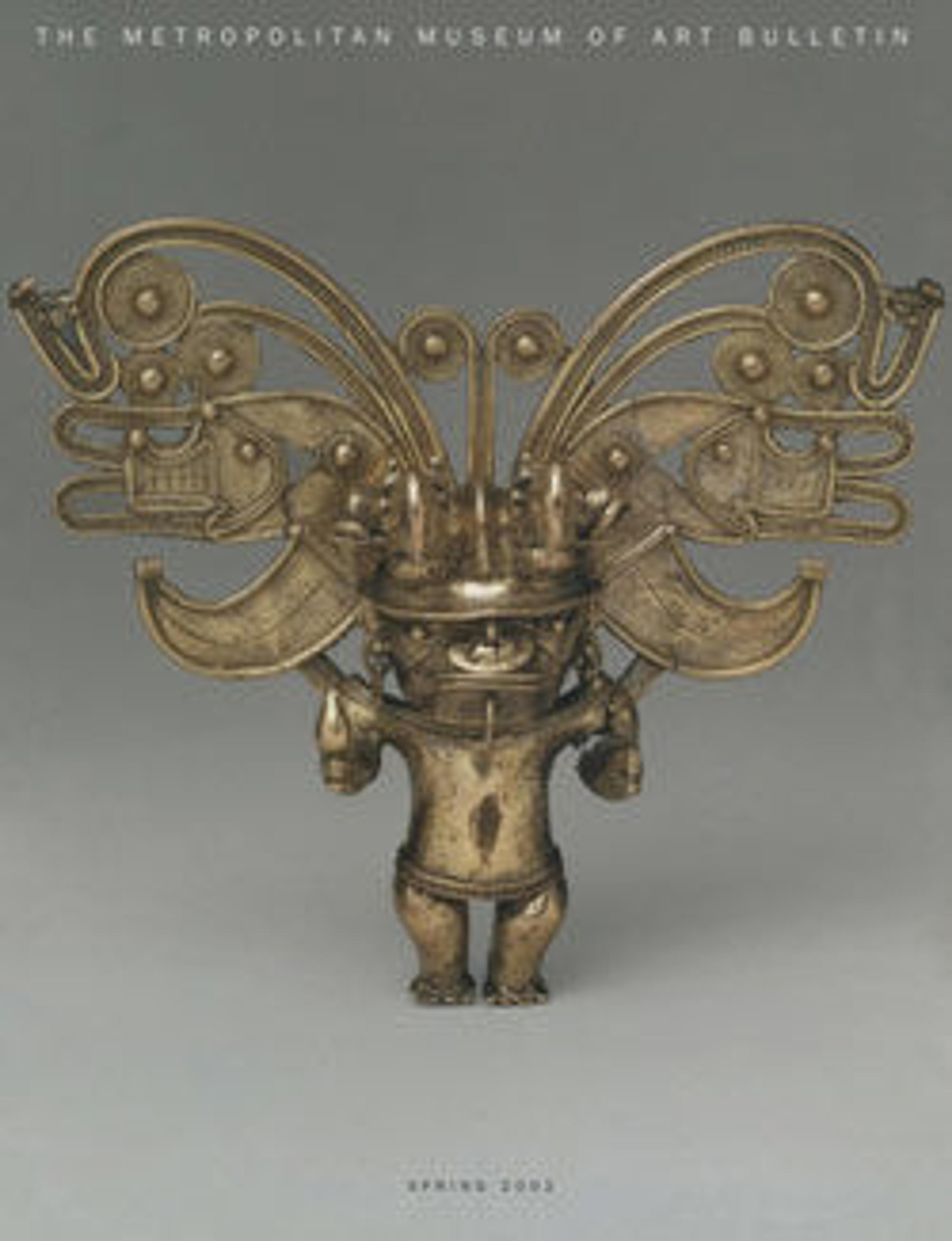Costumed figure pendant
The Tolima peoples of Colombia's Magdalena Valley produced a distinctive type of gold object that had a high degree of consistency over a considerable period of time. The objects, figure pendants with zoomorphic and anthropomorphic references, were worn about the neck suspended from cords or thongs; they are almost flat, with sharp, symmetrical outlines. Their standard, identifiable forms verge on abstraction, but facial features such as the long, slender noses, beady eyes, and toothy mouths are depicted more realistically. Two basic configurations are known; the present example is of the "winged" body type. It has the squarish face with big, loopy ears, inverted L-shaped ornaments on top of the head, perhaps representing plumes, and the large bifurcated tail common on both types. Its midsection, however, below the splayed, fringed "arms," features elaborate openwork, perhaps depicting feathers or even a feathered costume. It has been suggested that the animal references of Tolima spread "wing" pendants—perhaps to bats, birds, and serpents—relate the figures to shamanism.
Artwork Details
- Title:Costumed figure pendant
- Date:1st–7th century
- Geography:Colombia
- Culture:Tolima
- Medium:Gold
- Dimensions:H. 7 × W. 4 3/8 × D. 3/8 in. (17.8 × 11.1 × 1 cm)
- Classification:Metal-Ornaments
- Credit Line:The Michael C. Rockefeller Memorial Collection, Bequest of Nelson A. Rockefeller, 1979
- Object Number:1979.206.497
- Curatorial Department: The Michael C. Rockefeller Wing
More Artwork
Research Resources
The Met provides unparalleled resources for research and welcomes an international community of students and scholars. The Met's Open Access API is where creators and researchers can connect to the The Met collection. Open Access data and public domain images are available for unrestricted commercial and noncommercial use without permission or fee.
To request images under copyright and other restrictions, please use this Image Request form.
Feedback
We continue to research and examine historical and cultural context for objects in The Met collection. If you have comments or questions about this object record, please contact us using the form below. The Museum looks forward to receiving your comments.
